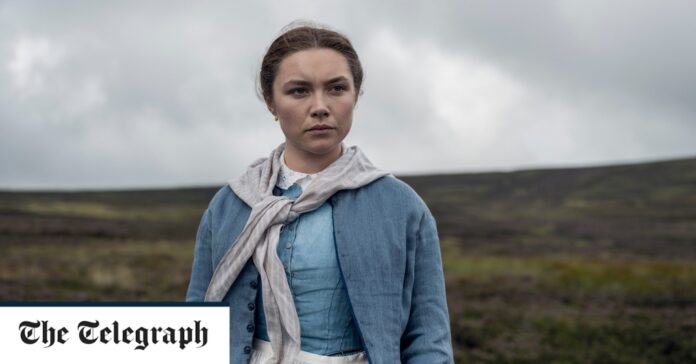Florence Pugh’s new film is inspired by the stories of girls who claimed to live on air alone. Were they frauds – or geniune miracles?
On December 17, 1869, Sarah Jacob died in her bed in the farming village of Llanfihangel-ar-Arth in Carmarthenshire, Wales. She was 12 years old and, having taken to her bed following a short illness, reportedly hadn’t eaten for two years. Journalists had breathlessly covered her story, doctors had examined her, in her final weeks nurses from Guy’s Hospital in London had sternly stood watch for evidence of a scam, and the public had flocked from all over the country to gawp, but no evidence of food consumption could be discovered. Throughout it all, little Sarah, by now a media star, lay in her bed, writing poetry and reading the bible. Often she would be bedecked in flowers. In the end she starved to death.
Jacob was far from the only instance of a young girl in the 19th century purporting to be surviving on air alone and these cases inspired Emma Donoghue’s novel The Wonder (2016). Netflix’s unsettling new film of the same name, adapted by Donoghue and Alice Birch, stars Florence Pugh as an English nurse, Lib, sent to be the “watcher” over a young girl in rural Ireland who is supposedly existing on “manna from heaven”.
While Donoghue says The Wonder is an “invented” story, it was based on a “very real phenomenon”. In 1873, 17-year-old Martha White, from Market Harborough, apparently stopped eating for several years, going into convulsions whenever anyone tried, and eventually dying emaciated and blind in 1877. In 19th century New York, Mollie Fancher became known as “The Brooklyn Enigma” for seemingly not eating a thing for decades while convalescing from a serious spinal injury.
A very famous story from several decades previously, which almost certainly would have been known to the Jacob family, was that of Ann Moore, who became known as “the fasting woman of Tutbury” for claiming to have eaten nothing at all between 1807 and 1813. So notorious did these cases become that collectively they were known as the “fasting girls”.


